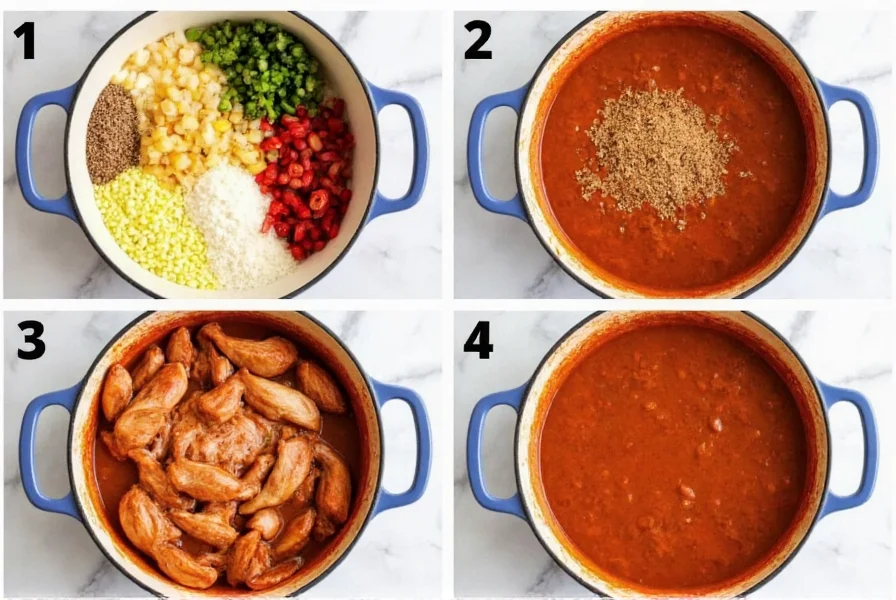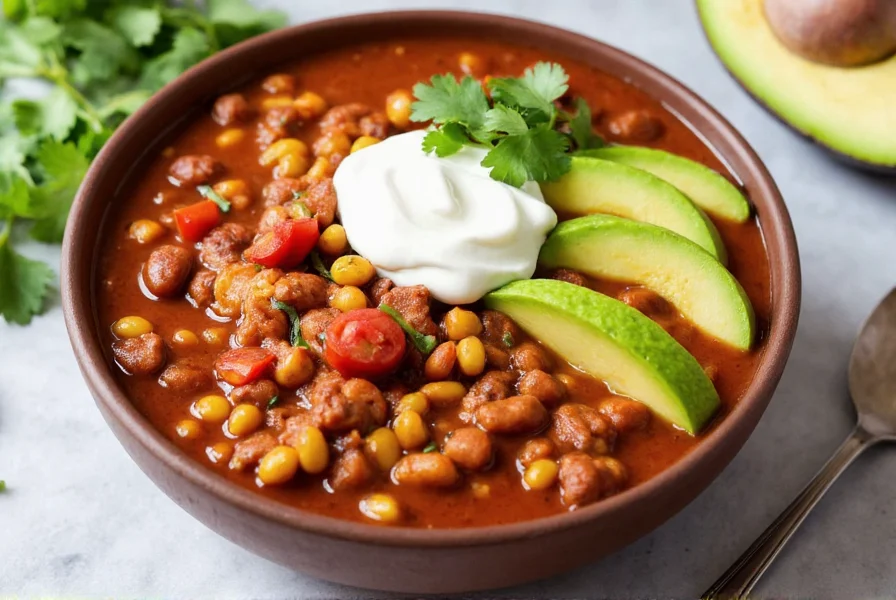When searching for cin chili, you're likely looking for information about chicken chili—a delicious, protein-rich dish that has become increasingly popular as a healthier alternative to traditional beef-based chili. This common misspelling occurs when "ch" gets abbreviated to "c" and "icken" becomes "in" in casual typing.
The Evolution of Chicken Chili
While traditional chili con carne originated in Texas using beef, chicken chili emerged as a popular variation in the late 20th century. Food historians note that the shift toward poultry-based chili recipes coincided with growing health consciousness in American cooking. Chicken chili offers approximately 30% fewer calories and significantly less saturated fat than its beef counterpart while maintaining the complex flavor profile that makes chili so beloved.
Essential Ingredients for Authentic Chicken Chili
The foundation of any successful chicken chili recipe includes these key components:
| Category | Essential Ingredients | Optional Enhancements |
|---|---|---|
| Protein | Boneless chicken breasts or thighs | Shredded rotisserie chicken |
| Beans | White beans or Great Northern beans | Black beans for color contrast |
| Base | Chicken broth, fire-roasted tomatoes | Tomatillo puree for verde version |
| Spices | Cumin, chili powder, garlic powder | Chipotle peppers for smokiness |

Step-by-Step Preparation Guide
Creating the perfect chicken chili requires attention to technique. Follow these professional cooking methods for optimal results:
- Proper chicken preparation: For best texture, poach chicken in broth rather than browning. This keeps the meat moist and prevents toughness.
- Layering flavors: Sauté onions and garlic first, then add spices to toast them briefly before adding liquids—this technique called "blooming" spices maximizes flavor extraction.
- Simmering time: Allow at least 30 minutes of simmering after adding chicken to develop complex flavors, but avoid overcooking which can make chicken stringy.
- Acid balance: Finish with a splash of lime juice or apple cider vinegar to brighten flavors and balance richness.
Nutritional Benefits of Chicken Chili
Compared to traditional beef chili, chicken chili offers significant nutritional advantages without sacrificing satisfaction. A typical serving (1 cup) contains approximately:
- 285 calories (vs. 395 in beef chili)
- 32g protein (excellent for muscle maintenance)
- 12g fiber from beans and vegetables
- Only 4g saturated fat (compared to 11g in beef versions)
This makes chicken chili an ideal choice for those following healthy meal prep strategies or seeking high-protein vegetarian chili alternatives when using plant-based chicken substitutes.
Regional Variations Worth Trying
Culinary traditions have produced several distinctive chicken chili styles:
- White chicken chili: Features white beans, chicken, and green chilies with a creamy base
- Texas-style chicken chili: Omits beans entirely, focusing on meat and chili peppers
- Midwest chicken chili: Includes tomatoes and kidney beans for a heartier texture
- Southwest verde chicken chili: Uses tomatillos and jalapeños for a tangy green version
Common Mistakes to Avoid
Even experienced cooks make these frequent chicken chili preparation errors:
- Overcooking the chicken, resulting in dry, stringy texture
- Adding spices too late in the cooking process
- Using low-quality broth which forms the flavor foundation
- Skipping the crucial resting period before serving
- Overloading with too many competing ingredients

Serving and Storage Recommendations
For optimal flavor development, allow chicken chili to rest for at least 15 minutes after cooking. This essential chicken chili resting technique lets flavors meld and makes the dish even better the next day. Store in airtight containers for up to 4 days in the refrigerator or freeze for up to 3 months.
When serving, consider these complementary toppings that enhance the authentic chicken chili dining experience:
- Fresh cilantro for brightness
- Lime wedges for acidity
- Avocado slices for creaminess
- Sour cream or Greek yogurt for cooling contrast
- Shredded cheese for richness
Frequently Asked Questions
Can I make chicken chili in a slow cooker?
Yes, slow cooker chicken chili works exceptionally well. Brown your aromatics first, then combine all ingredients except dairy toppings and cook on low for 6-8 hours. Add chicken during the last 2 hours to prevent overcooking. This method produces incredibly tender meat and deeply developed flavors.
What's the difference between chicken chili and traditional beef chili?
The primary difference is the protein source, but this creates significant flavor and texture variations. Chicken chili typically has a lighter, more delicate flavor profile that pairs well with white beans and green chilies, while beef chili offers a richer, meatier taste that stands up to kidney beans and darker spices. Chicken chili generally cooks faster and has fewer calories and less saturated fat.
How can I make my chicken chili less spicy?
To reduce spiciness in chicken chili, use mild chili powder instead of hot varieties, remove seeds from fresh peppers, and increase the amount of tomatoes or broth. Adding a small amount of sugar or honey can balance heat, while dairy toppings like sour cream provide immediate cooling when serving. For future batches, consider using Anaheim peppers instead of jalapeños for milder heat.
Can I freeze chicken chili successfully?
Absolutely. Chicken chili freezes exceptionally well for up to 3 months. Cool completely before transferring to freezer-safe containers, leaving 1-inch headspace for expansion. When reheating, thaw overnight in the refrigerator then warm gently on the stove, adding a splash of broth if needed. The flavors often improve after freezing as ingredients continue to meld.
What are the best side dishes to serve with chicken chili?
Excellent side dishes for chicken chili include cornbread (for dipping), a simple green salad with citrus dressing, roasted vegetables, or rice for a heartier meal. For a low-carb option, try serving with baked sweet potato wedges. The key is choosing sides that complement rather than compete with the chili's complex flavors.











 浙公网安备
33010002000092号
浙公网安备
33010002000092号 浙B2-20120091-4
浙B2-20120091-4